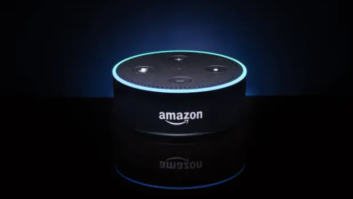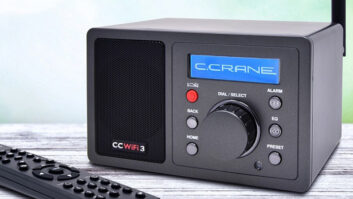Smart speaker growth in the U.S. market has plateaued, and AM/FM radio stations are benefiting from these devices being in U.S. homes. Those are two of eight conclusions about smart speakers contained in the Cumulus Media 2022 Audioscape PowerPoint document. It is based on data from Edison Research’s “Share of Ear” Q2 2022 Report.
Here are those conclusions in order, as cited from Cumulus Media’s Westwood One blog (Westwood One) that succinctly summarized the Audioscape data. It was written by Pierre Bouvard, the Chief Insights Officer of the Cumulus Media | Westwood One Audio Active Group. A combined link for the blog and report can be found at the end of this article.
Smart speaker ownership has stalled

According to the Westwood One blog, smart speaker ownership in the U.S. soared from 7% to 33% from 2017 to 2020. “The pandemic froze purchases until Christmas 2021 when ownership jumped to 40% in Q1 2021,” Bouvard says. “Since then, ownership has stalled with no post-Christmas ‘pop’ in 2021.”
As for why? “Perhaps ownership rates have stalled due to limited consumer applications besides playing music and answering simple questions,” says Bouvard. “Since smart speakers are inherently at-home devices, consumer interest and attention might be more focused on out-of-home activities in the post-pandemic era.”
Smart speakers skew younger
According to the Westwood One blog, 46% of Americans 13-34 who were surveyed own smart speakers. This rate drops to 44% for the 35-54 demographic and 27% for those over 55, “perhaps due to limited perceived benefits,” Bouvard observes. “It is interesting to note that the older the demo, the greater the growth in smart speaker ownership.”
The growth of radio streaming on U.S. smart speakers has also slowed, in pace with ownership growth
“According to Triton Digital, since 2021, AM/FM radio streaming via smart speakers has stabilized, growing slightly from 25% to 27%,” says Bouvard. “It is impressive that in five years, over a quarter of total AM/FM radio streaming is now occurring via smart speakers.”
[Related: “Use of Voice Commands Is on the Rise“]
Smart speakers are often the only “radio devices” in U.S. homes
Unexpected good news: The decline in tabletop radios in US homes is being offset by smart speaker streaming AM/FM radio in these spaces. This is because smart speakers “are now more likely to be the only ‘radio device’ in the home,” Bouvard says. “Edison’s recent Infinite Dial study revealed that 40% of smart speaker owners do not have a radio in their home, up from 28% in 2018.”
Alexa rules
Based on its analysis of Edison Research’s data, the Cumulus Media Audioscape report says that Amazon Alexa smart speakers have 80% penetration in U.S. homes. “32% of smart speaker homes have a Google Home,” Bouvard notes. “12% of homes own both devices.”
So does Amazon Music
“Given Alexa’s dominant device footprint, it is no surprise that Amazon Music is the most listened to platform on smart speakers,” says Bouvard. “According to Edison’s ‘Share of Ear’ Q2 2022, 20% of all tuning minutes on smart speakers goes to Amazon Music.” For the record, YouTube videos come second at 12% and AM/FM radio is tied with SiriusXM at 11%, followed by Spotify at 10%, podcasts at 8%, audiobooks at 7% and Pandora at 5%, among others.
[Visit Radio World’s News and Business Page]
Promoting radio playback on smart speakers pays off
Proving once again that radio advertising works, the Westwood One blog reports that promoting AM/FM radio feeds on smart speakers motivates people to listen to them. “AM/FM radio stations are consistently number one in ad-supported audio shares on smart speaker devices,” Bouvard says. “No wonder as streaming now represents 16% of all time spent on AM/FM radio.”
The larger the market, the more smart speaker penetration
Just as with podcast listener rates, “smart speaker ownership over-indexes in top markets and under-indexes in smaller markets,” says Bouvard. “In the top 10 DMAs, smart speaker ownership is 17% more likely than average. In markets 51 and smaller, ownership is 20% less likely.”
Pierre Bouvard’s Westwood One blog and the Cumulus Media 2022 Audioscape document can be accessed here.







